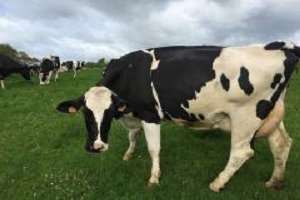By Dave Albin
When US dairy farmers worked together to reduce herd numbers — in order to limit supply and boost prices — this was apparently seen as a dangerous and deceptive move. Recently, dairy cooperatives (producers who work together and serve as middlemen between the farms and processors of dairy products) settled a class-action lawsuit for $52 million for working to reduce dairy cattle numbers, which would limit the supply of milk products. Why would farmers do this in the first place?

Dairy farms in general are still relatively small and have a meager return on investment, often requiring another source of income off the farm. This is largely due to one main factor: Americans are continuing to consume less and less dairy milk, even though public schools are required to buy it. Add to this the long list of changing consumer preferences seemingly ignored by the industry for many years.
The actions by the dairy cooperatives, resulting in the lawsuit in question here, seemed to be doing what was long overdue — responding to consumers. The "herd retirement program" was a joint effort to remove producing animals from farms — often poorly performing ones — to limit supply and boost prices. And, this is apparently what happened as producer prices rose from 2004 to 2008.
If you're wondering what's wrong with all of this — legally speaking — you have to go back to 1922 when the Capper-Volstead Act was passed. This act was a response to anti-trust legislation and sought to allow producers of agricultural products to form cooperatives and work together to market farm products. So, apparently before this, it was potentially illegal for neighboring farmers to speak to each other and sell their products together. This act also concentrated authority with one person, the US Sectary of Agriculture, who was now able to break up "monopolies".
We get a glimpse at how strange and limiting these types of regulations can be by looking further into this lawsuit. The Capper-Volstead Act may have allowed dairy producers to consolidate bargaining power through organizing while keeping the "profiteering" middlemen (i.e., the dairy processors who make salable products that consumers want) in check. But, the Act also limited organization among farmers in order to "protect" consumers:
What [the Act] did not allow was the farmers to get together to sell their milk to decide how much they were going to produce,” said Jeff Friedman, a partner at the law firm that filed the suit, Hagens Berman Sobol Shapiro LLP.
I'm not quite sure you can uncouple forming a producer cooperative to consolidate bargaining power and deciding how much you're going to produce. Even more odd is how anyone could then be angry that this resulted in an effort "to line the pockets of agribusiness." Of course it did.
The only real problem here is that we have legislation trying to control how people associate, including how people in the same industry can speak to each other, hold meetings, and make decisions. Thanks to communication among businesses, production was standardized and commoditized, and central locations for consolidating raw materials were established. In addition, US federal programs during times of war preferred to deal with larger groups and fewer products.
These are other government programs that have influenced dairy production, such as those described here. For example, the Federal Food Administration (1917-1919) dealt mainly with cooperatives and met milk producers' price demands. This eventually resulted in wild fluctuations in milk pricing which "required" more government intervention to ensure "supplies of pure and wholesome milk at all times." So, the result of this was a focus on the promotion of one product — fluid milk — that consumers started rejecting for decades before much of anything was done about it. A less-regulated industry would have, long ago, likely adjusted to the fact that, even though fluid milk demand is falling, overall demand for dairy products is actually increasing, with products such as Greek yogurt leading the way.
Click here to see more...